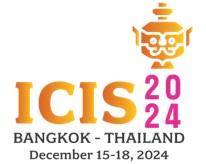Loading...
Paper Number
2092
Paper Type
Short
Abstract
This study examines the underlying values and goals driving the use of Green Information Systems (IS) through 217 laddering interviews with users in the food and commodities retail sector. Utilizing hierarchical clustering analysis, we propose a preliminary typology identifying seven distinct Green IS user types, each characterized by values and goals that motivate their engagement with Green IS. The study offers a novel approach for understanding Green IS users and introduces a methodological approach for connecting user types with system features. The study findings extend the previous understandings of the drivers of user engagement, and the preliminary typology itself may be utilized for incorporating instrumental and experiential user goals into consumer-oriented Green IS design. Our future research will focus on empirically validating the typology across different contexts.
Recommended Citation
Lumivalo, Juuli; Clements, Kati; and Mikkilä, Annastina, "Toward A Typology for Green IS User Types" (2024). ICIS 2024 Proceedings. 10.
https://aisel.aisnet.org/icis2024/user_behav/user_behav/10
Toward A Typology for Green IS User Types
This study examines the underlying values and goals driving the use of Green Information Systems (IS) through 217 laddering interviews with users in the food and commodities retail sector. Utilizing hierarchical clustering analysis, we propose a preliminary typology identifying seven distinct Green IS user types, each characterized by values and goals that motivate their engagement with Green IS. The study offers a novel approach for understanding Green IS users and introduces a methodological approach for connecting user types with system features. The study findings extend the previous understandings of the drivers of user engagement, and the preliminary typology itself may be utilized for incorporating instrumental and experiential user goals into consumer-oriented Green IS design. Our future research will focus on empirically validating the typology across different contexts.
When commenting on articles, please be friendly, welcoming, respectful and abide by the AIS eLibrary Discussion Thread Code of Conduct posted here.



Comments
21-UserBehavior